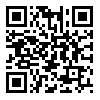Volume 19, Issue 1 (5-2013)
Research on Information Science and Public Libraries 2013, 19(1): 21-51 |
Back to browse issues page
Download citation:
BibTeX | RIS | EndNote | Medlars | ProCite | Reference Manager | RefWorks
Send citation to:



BibTeX | RIS | EndNote | Medlars | ProCite | Reference Manager | RefWorks
Send citation to:
Abdi L, Sayadkuh A, Taherian A. Proposing an Alternative Framework for Evaluating Annotative Bibliographies
. Research on Information Science and Public Libraries 2013; 19 (1) :21-51
URL: http://publij.ir/article-1-336-en.html
URL: http://publij.ir/article-1-336-en.html
Shiraz University , leilaabdi27@yahoo.com
Abstract: (9436 Views)
Purpose: composing and formulating bibliography is key activity in scientific area. It is necessary to conduct this activity on the basis of an organized and coherent framework in order to prevent wasting time and cost, unwillingness of audiences, incoherency of book description/analysis structure, and imperfect evaluation. Since the lack of such tool to formulation of bibliographies is evident with respect to literature review, the purpose of this research is to produce a descriptive-annotated framework.
Methodology: This study is a documentary research. Since the research approach was qualitative, the purposive sampling was used. So, three following kinds of resources related to the research problem, were studied: 1) Bibliographic resources (400 books), 2) English bibliographic frameworks (in bounded level), 3) methodology and reference work resources in the library and information science area. In addition, the saturation principle was considered in data gathering and analyzing. In order to data gathering, necessary criteria for preparing proposed framework were extracted from the resources. Then the recorded data was analyzed in the qualitative content analysis way and classified to the related categories. Refining the prepared framework was continued up to the terminating the research, and its' reliability was evaluated based on the professionals opinions and by testing on 10 books in myth area.
Findings: The final framework includes two main parts: descriptive and annotated. 3 sub-categories of the first part are: bibliographic information, a brief introduction to the author and its' works and book chapters and outline. The annotated part includes subject-oriented and critical sections that the first section includes the author purpose in terms of subject, author purpose in terms of kinds of audience, and the kind of work in terms of affecting. In the critical section that is the main part of the framework, 20 following sub-categories were extracted: Book print, the publisher credit, the author credit, consistency between book’s title and content, table of contents, evaluating of the preface and introduction, style and prose, book unique attribute, analyzing the content, the extent of achieving to purpose by author in terms of subject and of coherency with audiences, the coverage extent of book key issues, author’s view or bias, book contents independency, conclusion, tables and examples, footnotes, references, indices and translation quality. Finally some suggestions based on this research were offered for the future studies and conducting similar researches.
Originality/value: The new, comprehensive and precise framework proposed by this research can be suitable for formulation and evaluation of bibliographies. Besides, it can be a good reference for authors, researchers, critics and audiences to make purposeful and coherent book review, analysis and description.
Methodology: This study is a documentary research. Since the research approach was qualitative, the purposive sampling was used. So, three following kinds of resources related to the research problem, were studied: 1) Bibliographic resources (400 books), 2) English bibliographic frameworks (in bounded level), 3) methodology and reference work resources in the library and information science area. In addition, the saturation principle was considered in data gathering and analyzing. In order to data gathering, necessary criteria for preparing proposed framework were extracted from the resources. Then the recorded data was analyzed in the qualitative content analysis way and classified to the related categories. Refining the prepared framework was continued up to the terminating the research, and its' reliability was evaluated based on the professionals opinions and by testing on 10 books in myth area.
Findings: The final framework includes two main parts: descriptive and annotated. 3 sub-categories of the first part are: bibliographic information, a brief introduction to the author and its' works and book chapters and outline. The annotated part includes subject-oriented and critical sections that the first section includes the author purpose in terms of subject, author purpose in terms of kinds of audience, and the kind of work in terms of affecting. In the critical section that is the main part of the framework, 20 following sub-categories were extracted: Book print, the publisher credit, the author credit, consistency between book’s title and content, table of contents, evaluating of the preface and introduction, style and prose, book unique attribute, analyzing the content, the extent of achieving to purpose by author in terms of subject and of coherency with audiences, the coverage extent of book key issues, author’s view or bias, book contents independency, conclusion, tables and examples, footnotes, references, indices and translation quality. Finally some suggestions based on this research were offered for the future studies and conducting similar researches.
Originality/value: The new, comprehensive and precise framework proposed by this research can be suitable for formulation and evaluation of bibliographies. Besides, it can be a good reference for authors, researchers, critics and audiences to make purposeful and coherent book review, analysis and description.
Type of Study: quantitative |
Subject:
Child and Adolescent Studies
Received: 2013/06/26 | Accepted: 2013/07/18 | Published: 2013/07/18
Received: 2013/06/26 | Accepted: 2013/07/18 | Published: 2013/07/18
Send email to the article author
| Rights and permissions | |
 |
This work is licensed under a Creative Commons Attribution-NonCommercial 4.0 International License. |





